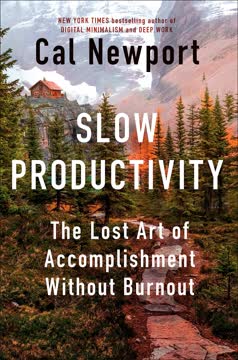Key Takeaways
1. GM's Turnaround: From Bankruptcy to Profitability
"The economy didn't get GM. Mismanagement did."
Bankruptcy and bailout. In 2009, General Motors filed for bankruptcy after years of mismanagement and financial struggles. The U.S. government provided a $50 billion bailout, taking a 61% ownership stake in the company. This led to GM being dubbed "Government Motors," a label that significantly impacted employee morale and public perception.
New leadership and strategy. Ed Whitacre was appointed as chairman and later CEO to lead GM's turnaround. He focused on:
- Simplifying the organizational structure
- Empowering employees with clear responsibilities
- Improving product quality and innovation
- Restoring financial stability
Rapid recovery. Under Whitacre's leadership, GM achieved a remarkable turnaround:
- Posted first profit in six years within months
- Repaid government loans ahead of schedule
- Successfully launched new products, including the Chevrolet Volt
- Prepared for a historic Initial Public Offering (IPO) to reduce government ownership
2. Leadership in Crisis: Whitacre's Hands-On Approach
"I'm not a fan of PowerPoints."
Direct engagement. Whitacre adopted a hands-on leadership style, breaking from GM's traditional hierarchical approach:
- Regularly visited different departments and facilities
- Engaged directly with employees at all levels
- Made himself accessible, even eating in the company cafeteria
No-nonsense decision-making. Whitacre emphasized:
- Clear, concise communication
- Quick decision-making without unnecessary meetings or presentations
- Personal accountability for results
Cultural shift. This approach led to:
- Increased transparency across the organization
- Faster implementation of changes
- Improved employee morale and engagement
3. Simplifying GM: Dismantling the Matrix Management Structure
"Matrix management was the main problem."
Identifying the issue. Whitacre quickly recognized that GM's complex matrix management structure was hindering efficiency and accountability:
- Unclear reporting lines
- Diffused responsibility
- Slow decision-making processes
Restructuring the organization. Whitacre implemented a simpler, more direct organizational structure:
- Clear lines of authority and responsibility
- Reduced number of direct reports for top executives
- Eliminated unnecessary management layers
Results of simplification:
- Faster decision-making
- Increased accountability
- Improved operational efficiency
- Better alignment of goals across departments
4. Focus on People: The Key to Business Success
"People are the number one asset of any business."
Valuing employees. Whitacre emphasized the importance of treating employees well:
- Restored confidence in the workforce
- Encouraged open communication
- Recognized and rewarded talent
Developing talent. He focused on:
- Identifying and promoting promising employees
- Giving managers more authority and responsibility
- Encouraging risk-taking and innovation
Building relationships. Whitacre worked on improving relationships with:
- Union leaders
- Dealerships
- Suppliers
- Government officials
This people-centric approach led to:
- Improved morale
- Increased productivity
- Better labor relations
- Stronger partnerships across the business ecosystem
5. Rebuilding Confidence: Changing GM's Culture and Morale
"We design, build, and sell the world's best vehicles."
Creating a clear vision. Whitacre introduced a simple, powerful mission statement to focus the entire organization:
- Easy to understand and remember
- Provided a clear goal for all employees
Communicating progress. He emphasized:
- Regular updates on company performance
- Celebrating small wins
- Transparency about challenges and solutions
Leading by example. Whitacre demonstrated confidence in GM's future through:
- Personal appearances in company advertisements
- Direct engagement with employees and stakeholders
- Pushing for ambitious goals, like early loan repayment
Results of cultural shift:
- Increased employee pride and engagement
- Improved public perception of GM
- Renewed focus on product quality and innovation
6. Strategic Decision-Making: The GM-Apple iPhone Deal
"It was a total flier: We had no prototype to look at, no performance specs to consider, and no company track record to examine, because Apple had never designed a wireless device before."
Taking calculated risks. The decision to partner with Apple for the iPhone demonstrated Whitacre's approach to strategic decision-making:
- Willingness to break from traditional industry practices
- Focus on long-term potential over short-term certainties
- Trust in partners' capabilities (in this case, Steve Jobs and Apple)
Negotiating for success. The deal involved:
- Exclusive rights to the iPhone for AT&T (Whitacre's previous company)
- Significant financial commitments and revenue-sharing agreements
- Changes to AT&T's traditional business model
Long-term impact. The iPhone deal:
- Revolutionized the mobile phone industry
- Provided a significant boost to AT&T's wireless business
- Demonstrated the value of innovative partnerships
This example illustrates Whitacre's approach to high-stakes decision-making, which he later applied at GM.
7. The Road to Recovery: GM's Initial Public Offering (IPO)
"Staging an IPO is always a big deal. A company only has one IPO, so these are also historic events. But this IPO was going to be especially historic—a once-in-a-lifetime opportunity to reposition a hundred-year-old automobile company that had been a blue-chip stock for most of its life."
Preparing for the IPO. Whitacre pushed for an early IPO to:
- Repay government loans
- Remove the "Government Motors" stigma
- Demonstrate GM's financial recovery
Challenges and considerations:
- Timing: Balancing financial readiness with market conditions
- Size: Debating how much of the government's stake to sell
- Global investors: Navigating political concerns about foreign ownership
The IPO process:
- Engaged top investment banks
- Conducted extensive "road shows" to attract investors
- Managed complex negotiations with the U.S. Treasury and other stakeholders
Outcome and impact:
- Successful IPO raised billions, allowing partial repayment of government loans
- Marked a significant milestone in GM's recovery
- Restored confidence in GM among investors and the public
The IPO process showcased Whitacre's ability to navigate complex financial and political landscapes while keeping focus on GM's long-term success.
Last updated:
Review Summary
American Turnaround receives mixed reviews, with an average rating of 3.86 out of 5. Some readers praise Whitacre's down-to-earth management style and insights on leadership, emphasizing the importance of people and long-term thinking. Others criticize the book for lacking substance, being repetitive, and containing self-congratulatory content. Many appreciate Whitacre's straightforward approach and lessons from his experiences at AT&T and GM, while some find the book lacks detailed analysis of his strategic decisions and corporate turnaround methods.
Similar Books










Download EPUB
.epub digital book format is ideal for reading ebooks on phones, tablets, and e-readers.
